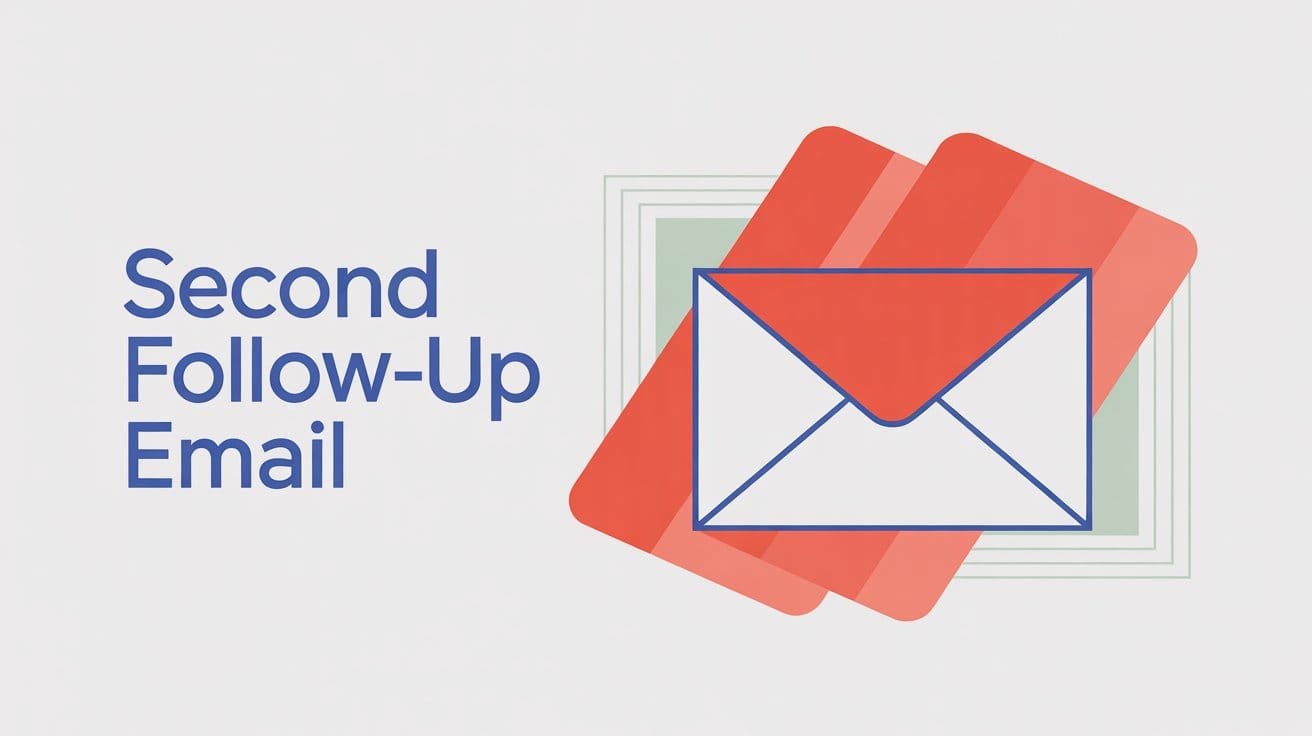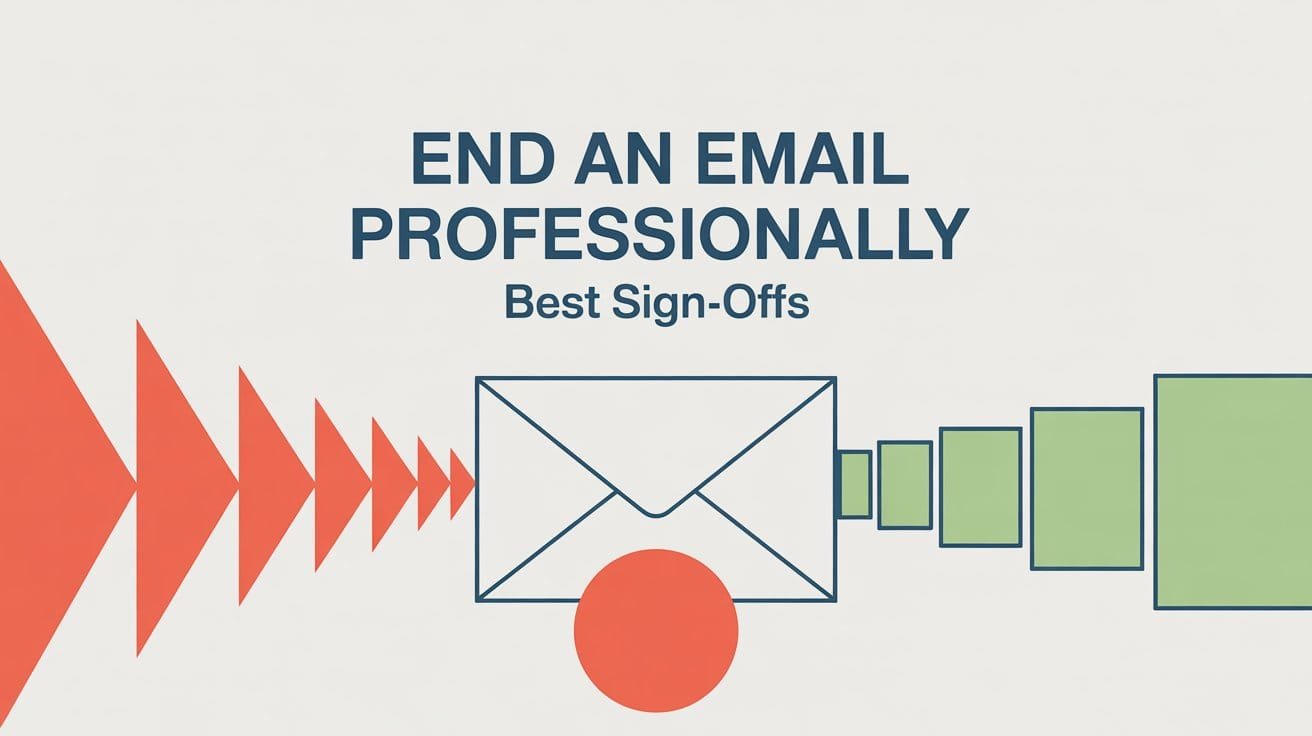Following up once and not hearing back can feel awkward, but sending a second follow-up? That takes a bit more thought. You don’t want to sound impatient or pushy, but you also don’t want your message to be forgotten.
A second follow-up email, when written with the right tone and timing, shows persistence without pressure. It reminds the recipient of your message, adds clarity if needed, and gives them a polite nudge to respond.
When to Send a Second Follow-Up Email
If your first follow-up didn’t get a response, the next step is all about timing and context. You want to give the recipient space, without waiting so long that the opportunity fades.
Wait at Least 5–7 Days After the First Follow-Up
Unless the matter is urgent, wait a full business week before sending your second follow-up. This gives them time to catch up without feeling pressured.
Consider the Situation
- Job Applications or Interviews: Wait about 7 days after your first follow-up. Employers often need time to review multiple candidates.
- Client or Sales Inquiries: A shorter window (4–5 days) may be appropriate if the request is time-sensitive or tied to a decision.
- Academic or Professional Requests: Give professors or managers at least 5 business days before checking in again.
Watch for Timing Clues
If your first email was sent near a holiday, weekend, or a known busy period, build in a little more patience. The second follow-up should feel like a gentle reminder, not an interruption.
How to Write a Second Follow-Up Email Politely
A second follow-up should feel thoughtful and professional, not pushy or repetitive. Keep it brief, reference your earlier messages, and make it easy for the recipient to respond.
Use a Clear and Respectful Subject Line
Signal that this is a follow-up without sounding frustrated.
Examples:
- Second Follow-Up: [Your Original Subject]
- Following Up Again – [Brief Topic]
- Just Checking In – [Position/Project Name]
Start with a Polite Acknowledgment
Begin by recognizing that the recipient may be busy.
Example:
I know things can get hectic, so I just wanted to check in again about the message I sent last week regarding [brief topic].
Mention Your Previous Emails Briefly
Remind them of your earlier communication without sounding like a complaint.
Example:
I reached out on [first email date] and followed up on [follow-up date], and I wanted to reconnect in case it got missed.
Restate Your Purpose or Request
Be direct about what you’re following up on—but stay courteous.
Example:
I’m still very interested in learning more about the opportunity to collaborate on [topic], and I’d appreciate any updates when you have a moment.
Offer a Simple Call to Action
Make it easy for them to respond or take the next step.
Example:
If this isn’t the right time, feel free to let me know—or if there’s someone else I should reach out to, I’d be glad to connect with them instead.
Close with Gratitude
End with appreciation for their time, even if they haven’t responded yet.
Example:
Thanks again for your time and consideration—I look forward to hearing from you whenever it’s convenient.
Second Follow-Up Email Templates
Use these templates when your first follow-up didn’t get a reply. Each one keeps the tone polite and adaptable to different situations.
Job Application – Second Follow-Up
Subject: Second Follow-Up: Application for [Job Title]
Dear [Hiring Manager’s Name],
I hope you’re doing well. I wanted to follow up again regarding my application for the [Job Title] position, originally sent on [date]. I followed up last week, and I understand things may be busy.
I’m still very interested in the role and would appreciate any updates when convenient. Please let me know if you need additional information from me.
Thank you again for your time and consideration.
Sincerely,
[Your Full Name]
Client or Business Proposal
Subject: Following Up Again – [Project or Proposal Name]
Hi [Client’s Name],
I just wanted to check in again regarding the proposal I shared on [original date]. I followed up last week, but I understand if things have been moving slowly on your end.
If there are any updates, questions, or a better time to revisit the proposal, feel free to let me know. I’m happy to adjust based on your needs.
Appreciate your time,
[Your Name]
[Your Contact Info]
Academic or Professor Follow-Up
Subject: Follow-Up on [Topic] – Class Inquiry
Dear Professor [Last Name],
I’m following up again on my earlier messages about [brief subject, e.g., office hours or assignment clarification]. I understand the semester is a busy time, but I wanted to reconnect in case my emails got missed.
I’d appreciate any clarification when convenient. Thank you for your time and support.
Best regards,
[Your Full Name]
[Your Course and Section]
Networking or Collaboration Request
Subject: Checking In – Collaboration Follow-Up
Hi [First Name],
I hope this message finds you well. I followed up last week after our initial conversation about [brief topic], and I just wanted to reach out one more time in case it got buried.
If you’re still open to chatting or exploring this further, I’d be happy to coordinate a time that works. If not, I completely understand and still appreciate your time.
Warm regards,
[Your Name]
Related: How to Write a Follow-Up Email After No Response
Tips for Sending a Second Follow-Up Without Being Pushy
Striking the right tone is essential in a second follow-up. You want to stay on the recipient’s radar, without sounding impatient or overbearing.
Keep Your Message Brief
Don’t rewrite your original message. Focus on one short paragraph that references the previous emails and gets to the point quickly.
Avoid Passive-Aggressive Phrases
Skip lines like “I guess you’re too busy to respond” or “I’ve emailed multiple times.” These can hurt your chances, even if you’re frustrated.
Instead:
“I understand things can get hectic, so I just wanted to check in again.”
Leave the Door Open
If a direct reply isn’t possible, give the reader an easy out or alternative.
Example:
“If now isn’t the best time, I’d be glad to reconnect later—or speak with someone else if needed.”
Don’t Follow Up Repeatedly Without New Info
Only send a second follow-up if it’s appropriate. If there’s no update or new value to add, stop at two follow-ups unless there’s a clear reason to continue.
Send During Business Hours
Avoid sending early morning, late night, or weekend emails unless the context is informal. Mid-morning on weekdays is usually best.
Conclusion
A second follow-up email can feel like walking a fine line—but when done right, it shows patience, professionalism, and persistence. Whether you’re waiting on a job update, a reply from a client, or a decision from a professor, your message doesn’t need to be long or complicated; it just needs to be polite, clear, and respectful of their time.
Use the templates and tips in this guide to follow up confidently, without overstepping. Sometimes, a simple second nudge is exactly what’s needed to get a response.



